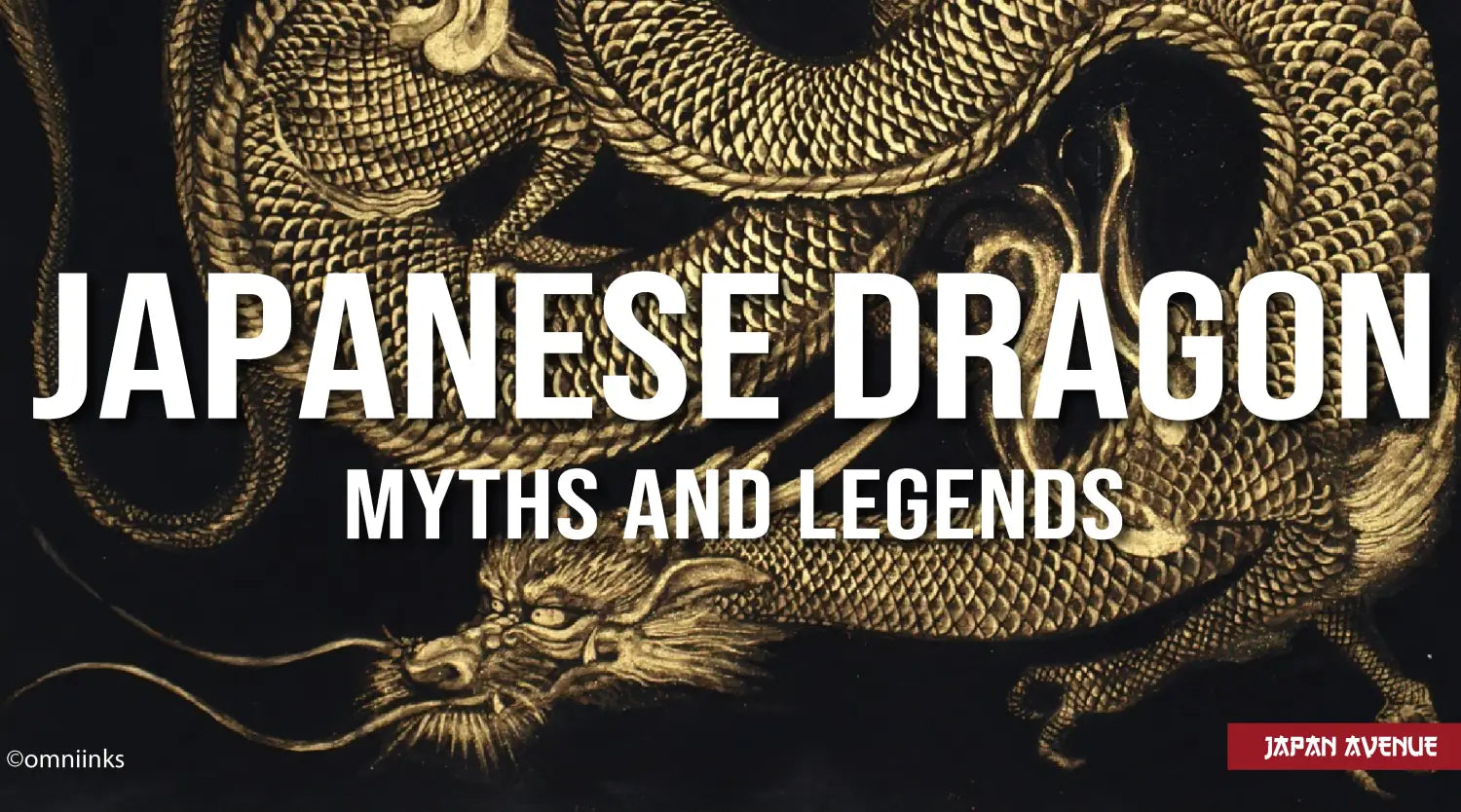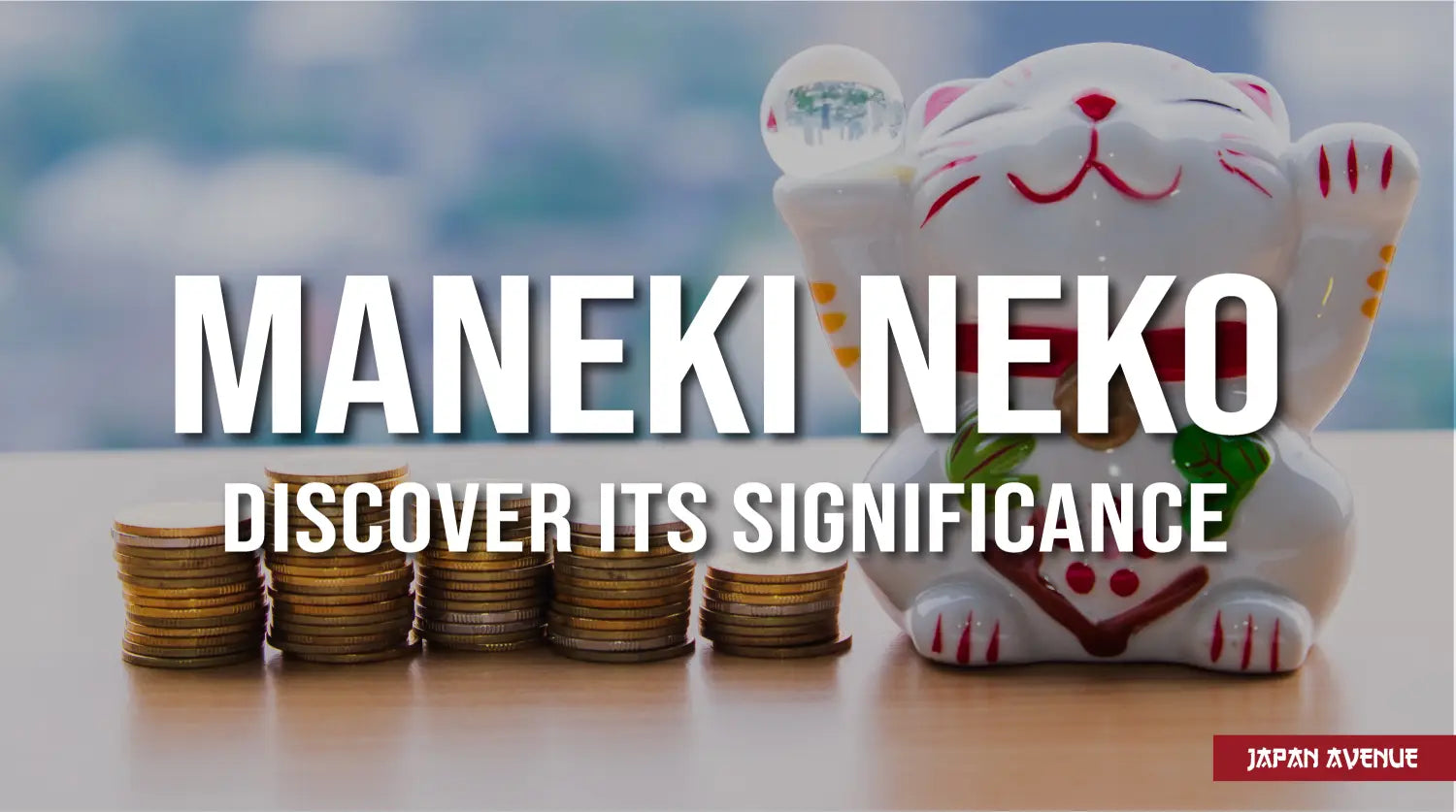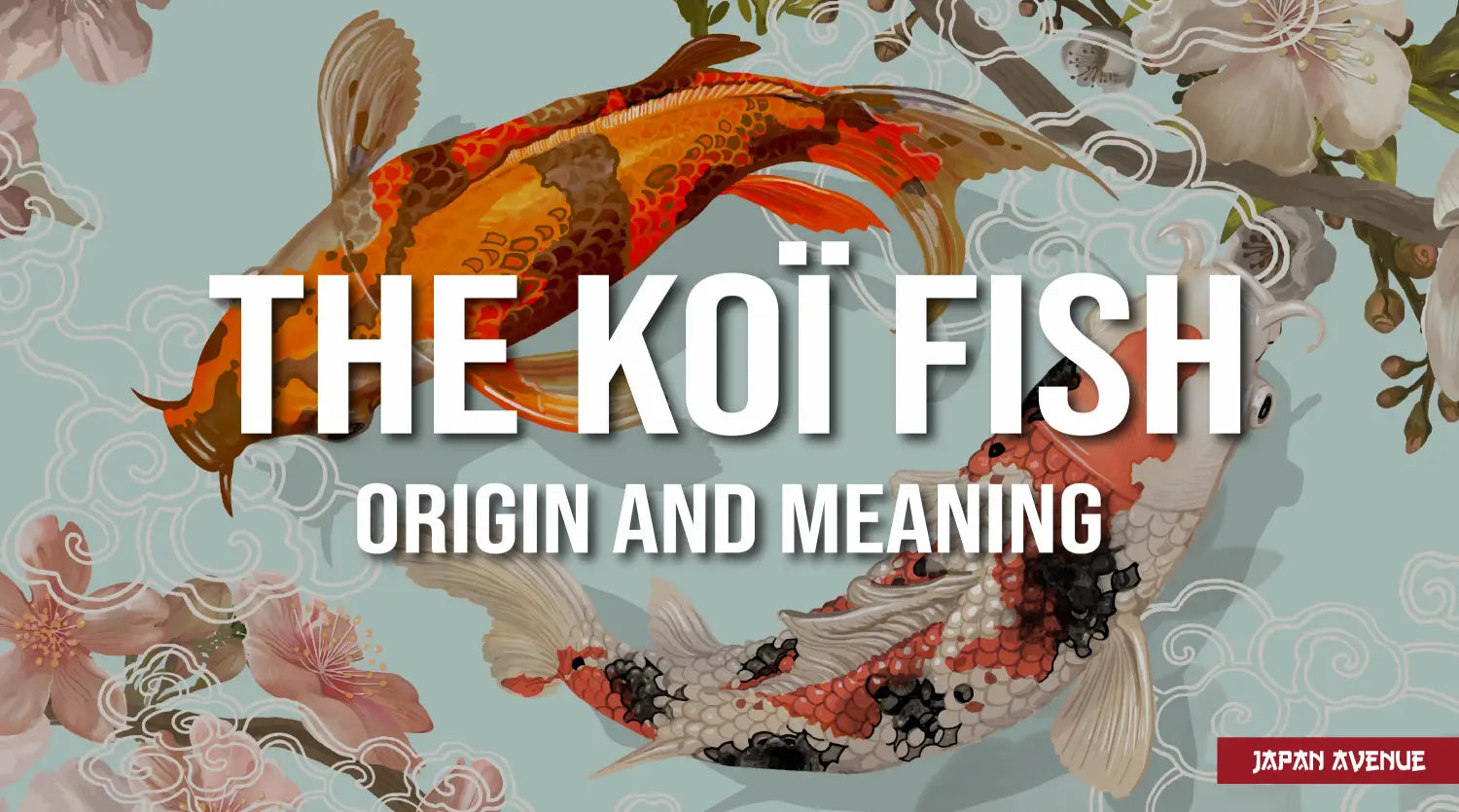Although far different from the Western fire-breathing dragon 🔥, the Japanese dragon remains a fascinating and emblematic legendary creature from the Land of the Rising Sun. It occupies an important place in Asian mythology where many myths refer to this force of nature.
Ready to learn more about this majestic legendary animal? 🧐
The Japanese dragon, also called ryū (龍) or tatsu (竜), is a snake-like creature without wings, contrary to the Western dragon. As a symbol of strength and power, the dragon is highly respected and honored in Japanese society.
Lets discover about the importance of the dragon in Japanese mythology, its origins, meaning as well as the legends. To begin with, what does this Oriental dragon actually look like? 🐉
The Japanese dragon, a splendid creature
The Japanese dragon is known as one of the guardians of Buddhism. Many religious buildings ⛩️ feature the dragon in order to protect their deities, either in the form of sculptures or paintings.
As an animal of Chinese origins, the accompanying legends originated from China before spreading throughout the Asian continent.
|
Did you know that the dragon possesses a sacred pearl, hidden in its throat, providing it with all its powers? Highly appreciated by humans, it brings happiness and wisdom to the one who holds it. 🐲
|
Portrait of the Japanese dragon

Illustration by Monanu on DeviantArt / Painting by Liu Yijun
This mythical animal has a long snake-like body covered with scales but no wings. Its appearance resembles a crossbreeding of several animals, with a reptile body, tiger paws, eagle talons, a hairy camel's head, ox ears and deer horns. Their demonic eyes add further grip to their fierce look. However, unlike its Chinese relative, the Japanese dragon only has three claws instead of five.
Before being transformed into a dragon, this creature has gone through several stages of development requiring thousands of years to complete. It first started as a snake 🐍 then mutated into a carp 🐟. A few centuries later, it acquired its famous goatee before growing clawed legs and a tail. At the end of this long metamorphosis, it developed horns to discern the sounds and to finish, a crest allowing it to fly as an adult.
|
👉 Discover the legend of the koi fish and its journey up the Yellow River. This story, at the origin of dragons, is a great example of perseverance!
|
Known for its great longevity, this reptile mainly lives in aquatic environments, which explains why it is often portrayed in water through Japanese artworks. 🌊
According to the Japanese mythology, this creature has the supreme power to metamorphose, to lengthen its body or even to become invisible. It may also take on human appearance (as in the movie Spirited Away).
Although this creature can fly, this is not its main power as it is more of a snake than a bird. We are thus quite far from the stereotype of the European dragon, hovering in the air, with its gigantic wings, and spitting fire.
Origins of the Japanese dragon
The Japanese dragon takes its origin in the legends of the genesis of universe. Shortly after the creation of heaven and earth, 7 generations of kami (Japanese gods) were born. The dragons would have appeared together with other creatures in order to protect them as the guardians of the celestial gods.
In Japanese mythology, it is said that they reign over the oceans and fight to defend the gods. 😮

There are 5 types of dragons:
- The celestial dragon, guardian of the kamis
- The spiritual dragon, god of wind and rain
- The land dragon, guardian of rivers and oceans
- The treasure-defending dragon that guards over precious stones
- The imperial dragon, symbol of the Chinese dynasty
What does the Japanese dragon symbolize?
Just like nature, of which it embodies the strength, power and unpredictability, this reptile may prove to be dangerous to the common man.
However, the dragon is, above all, a sign of good fortune and generally shows itself to be benevolent. In addition, it brings happiness, wealth 💰 and success and symbolizes wisdom, perseverance and immortality in the Japanese people's mind.
In Japan, the dragon is implored to attract rain, which nourishes the land. 🌧️
Japanese legends about the Dragon
In the Kojiki, an ancient book published in 712, containing numerous legends about the origin of Japan and Shinto gods, a number of myths are related to the dragon. The best-known of them certainly are the legends of Yamata No Orochi and Watatsumi.
Ancient Legend of Yamata no Orochi
 Susanoo killing Yamata no Orochi by Utagawa Kuniteru / Illustration of Orochi by Goble Warwick
Susanoo killing Yamata no Orochi by Utagawa Kuniteru / Illustration of Orochi by Goble Warwick
Yamata no Orochi also nicknamed Orochi was an evil creature of eight tails and eight heads which roamed near the Hi River in the Izumo City. Each one of his heads represented natural elements such as water, earth, wind, fire, lightning, light, darkness and venom. This creature and its red eyes, reminiscent the color of blood, its long body, that long that it stretched over 8 hills and 8 mountains, was absolutely impressive! 😲
Cypresses and moss could be observed on its back and rivers of blood flowed on its belly. According to the legend, this dragon used to devour a young girl once a year. No doubt that all the inhabitants of the Koshi province were frightened by this fiercely cruel monster.
"One day, when the king of Izumo was about to offer his eighth and last daughter as a sacrifice, to calm the beast, Susanoo, god of storms, proposed a covenant: fight the dragon in exchange for the girl's hand.
In order to vanquish Orochi, Susanoo had to play clever and deposited 8 barrels of sake in order to fool its enemy. Yamata no Orochi drank until the very last drop before falling asleep.
At that moment, Susanoo threw himself on the monster to kill it by cutting one by one its 8 heads. While cutting up its rival, Susanoo found a sacred sword called Kusanagi no Tsurugi inside the monster, a sword he later offered to his sister Amaterasu, goddess of the sun."
We can imagine this story actually reflects the human sacrifices made in the past to appease the anger of the opposing tribes, the sword found in the dragon's body being the long awaited acquisition of a fearsome weapon to defeat a trying battle.
| 💡 Want to learn more about this topic? Discover our article dedicated to the legend of Susanoo fighting the dragon Yamata no Orochi! |
The story of Watatsumi, Dragon king and God of the sea

Illustration by Themimig on DeviantArt
Watatsumi, also called Ryujin, is the dragon king and great god of the sea and oceans. This dragon is recognizable by his gigantic size and long moustache. As the master of the tides, Watatsumi governs all aquatic species. The generous king welcomes shipwrecked people in his magnificent underwater palace.
"One day, one of his beautiful daughters named Otohime met Hoori, a human being who was roaming the sea looking for a hook. After falling in love with each other, they decided to live together in Watatsumi Palace.
After several years, Hoori, who suffered boredom, wanted to return to the land, but was afraid of his brother's reaction once he'll discover that he hadn't found his fishhook. Caring, the king decided to summon the servants of his kingdom and ask them if they had seen the object he was looking for. By chance, a fish had just swallowed it. 🐟
Hoori then returned to his beloved land accompanied by his wife the dragon goddess."
According to the legend, their grandson became the first emperor of Japan. For this reason it is said that emperors are descendants of kamis.
The myth of Ryujin and the jellyfish: a curious one

There is another legend involving Ryujin, the god of the sea.
"While his daughter was suffering from an incurable disease, Ryujin asked the jellyfish to bring him a monkey liver. At that time the jellyfish still had bones and legs.
The jellyfish complied and went in search of the mammal. Once found the monkey, the monkey told the jellyfish that its liver had been stolen. The jellyfish returned empty-handed to its king.
Ryujin promptly realized that the monkey had been making fun of them and, in a state of anger, he flattened the jellyfish with his full weight."
Ever since then, the jellyfish resembles the mollusc we know today: flat and boneless. 😂
The importance of the dragon in Japanese culture
Each year, during spring, the Japanese honor the dragons at Kinryu no mai in Tokyo, a ceremony that takes place in Senso-ji of Asakusa, the most ancient Buddhist temple of the capital.
A golden dragon, carried by 8 dancers, parades around the religious building. Its body measures 18 meters long and possesses no less than 8888 scales. Many 8s - which is not surprising as it is a fetish number among Buddhists. The golden dragon also makes its return in Tokyo on October 18 during the celebration of chrysanthemums.

Dance of the golden dragon, Senso-ji temple in Tokyo.
If you happen to visit this beautiful country, you will probably spot dragons in the Shinto buildings, situated near the rivers.
In addition, Itsukushhima Shrine located on the sacred island of Miyajima and classified as a UNESCO World Heritage Site also is a remarkable place in Japan where dragons are worshipped. Lastly, if you visit a Zen Buddhist temple you will certainly notice them on the ceilings.
What does a Japanese dragon tattoo symbolize?
The dragon is a very popular tattoo theme all over the world. This is due to its strong symbolism, mythical character, astrological connotation and majestic appearance.
A dragon tattoo requires respect. Wise and benevolent, this mythical creature remains unpredictable and dangerous if you provoke it. Do you share the same temperament? Perhaps this tattoo belongs to you.

Young woman getting tattooed a Japanese dragon on her hand. Photo by Cottonbro.
The Japanese dragon ryū no longer holds any mystery for you
All these manifestations, legends, works and buildings in honor of the Japanese Dragon shows how this extraordinary creature has been rooted in Japanese culture over the centuries.
From now on, you will be able to impress your friends by sharing the amazing legend of Yamata no Orochi. 😉





1 comment
Dylan
Dragons Powers
Dragons Powers